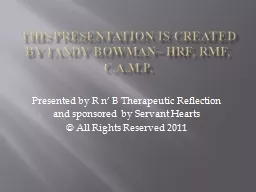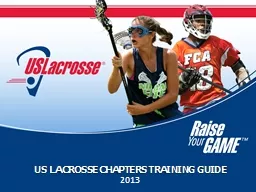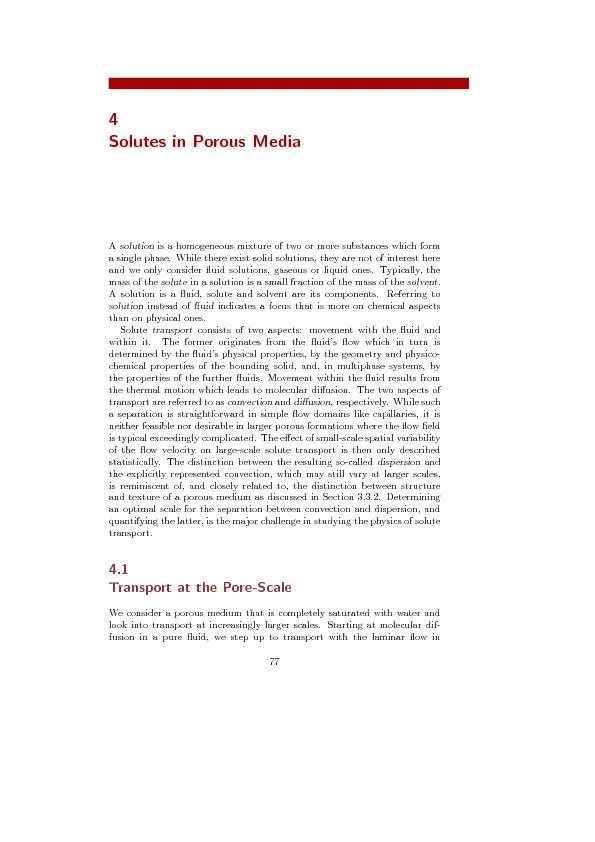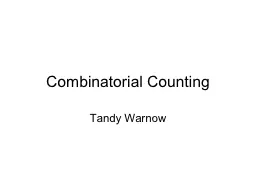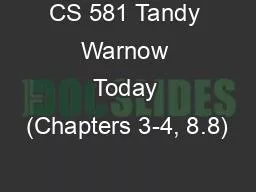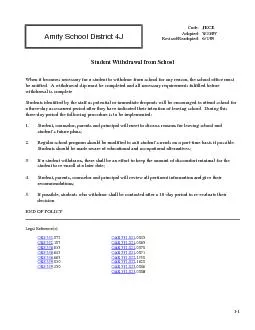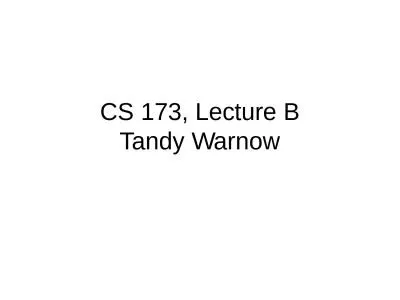PPT-CS 581 Tandy Warnow Today’s material (from Chapters 1-3)
Author : phoenixbristle | Published Date : 2020-06-17
Newick strings Representing rooted trees using clades and rooted triplet trees Constructing a rooted tree from its set of clades using Hasse Diagrams Constructing
Presentation Embed Code
Download Presentation
Download Presentation The PPT/PDF document "CS 581 Tandy Warnow Today’s material (..." is the property of its rightful owner. Permission is granted to download and print the materials on this website for personal, non-commercial use only, and to display it on your personal computer provided you do not modify the materials and that you retain all copyright notices contained in the materials. By downloading content from our website, you accept the terms of this agreement.
CS 581 Tandy Warnow Today’s material (from Chapters 1-3): Transcript
Download Rules Of Document
"CS 581 Tandy Warnow Today’s material (from Chapters 1-3)"The content belongs to its owner. You may download and print it for personal use, without modification, and keep all copyright notices. By downloading, you agree to these terms.
Related Documents


